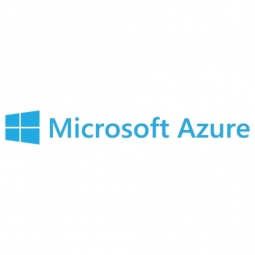Download PDF
Alpega Group's Sustainable Transformation with Microsoft and Red Hat
Technology Category
- Functional Applications - Transportation Management Systems (TMS)
- Platform as a Service (PaaS) - Application Development Platforms
Applicable Industries
- Cement
- Transportation
Applicable Functions
- Logistics & Transportation
- Procurement
Use Cases
- Transportation Simulation
- Vehicle-to-Infrastructure
Services
- System Integration
The Challenge
Alpega Group, a leading global logistics software company, coordinates the transportation of freight in 80 countries, working with 80,000 carriers and 200,000 members. This complex operation relies on the company’s Transport Management System (TMS). However, the company faced challenges with system reliability and efficiency. A system failure could cause significant delays and queues, impacting logistics processes worldwide. The company needed a solution that would ensure the smooth and continuous running of its TMS, allowing it to respond to demand and scale its operations accordingly. The challenge was to implement a new container management system that would not only improve the reliability and efficiency of their operations but also help optimize freight transportation and create more sustainability within the industry.
About The Customer
Alpega Group is a leading global logistics software company that offers end-to-end solutions covering all transport needs. The company works with 80,000 carriers and 200,000 members, coordinating the transportation of freight in 80 countries. At the heart of the company’s operations is Alpega TMS, a cloud-based software solution that connects manufacturers to a broad network of logistics providers, digitizing complex supply chain processes. The company’s TMS sets an industry standard, having been listed on Gartner’s Magic Quadrant for Transportation Management Systems for the past nine years. Over 500 in-house experts provide 24/7 support to Alpega’s software and services users.
The Solution
Alpega Group decided to implement a new container management system built on Microsoft Azure Red Hat OpenShift. This change facilitated greater agility, flexibility, and stability for Alpega’s Smart Booking system. Microsoft Azure Red Hat OpenShift is a scheduling platform that runs on top of Kubernetes, allowing businesses to manage the orchestration of containers with the support of two expert partners, Microsoft and Red Hat. This solution enabled Alpega to create a more agile, flexible, and secure TMS. The system can repair itself when something goes wrong, and it can scale to accommodate increased load. This solution has given Alpega much more flexibility, allowing them to upscale, downscale, and manage traffic effectively. The system also repairs itself, ensuring continuous operation without any visible impact on customers.
Operational Impact
Quantitative Benefit
Related Case Studies.

Case Study
System 800xA at Indian Cement Plants
Chettinad Cement recognized that further efficiencies could be achieved in its cement manufacturing process. It looked to investing in comprehensive operational and control technologies to manage and derive productivity and energy efficiency gains from the assets on Line 2, their second plant in India.

Case Study
Airport SCADA Systems Improve Service Levels
Modern airports are one of the busiest environments on Earth and rely on process automation equipment to ensure service operators achieve their KPIs. Increasingly airport SCADA systems are being used to control all aspects of the operation and associated facilities. This is because unplanned system downtime can cost dearly, both in terms of reduced revenues and the associated loss of customer satisfaction due to inevitable travel inconvenience and disruption.

Case Study
IoT-based Fleet Intelligence Innovation
Speed to market is precious for DRVR, a rapidly growing start-up company. With a business model dependent on reliable mobile data, managers were spending their lives trying to negotiate data roaming deals with mobile network operators in different countries. And, even then, service quality was a constant concern.

Case Study
Digitize Railway with Deutsche Bahn
To reduce maintenance costs and delay-causing failures for Deutsche Bahn. They need manual measurements by a position measurement system based on custom-made MEMS sensor clusters, which allow autonomous and continuous monitoring with wireless data transmission and long battery. They were looking for data pre-processing solution in the sensor and machine learning algorithms in the cloud so as to detect critical wear.

Case Study
Cold Chain Transportation and Refrigerated Fleet Management System
1) Create a digital connected transportation solution to retrofit cold chain trailers with real-time tracking and controls. 2) Prevent multi-million dollar losses due to theft or spoilage. 3) Deliver a digital chain-of-custody solution for door to door load monitoring and security. 4) Provide a trusted multi-fleet solution in a single application with granular data and access controls.

Case Study
Vehicle Fleet Analytics
Organizations frequently implement a maintenance strategy for their fleets of vehicles using a combination of time and usage based maintenance schedules. While effective as a whole, time and usage based schedules do not take into account driving patterns, environmental factors, and sensors currently deployed within the vehicle measuring crank voltage, ignition voltage, and acceleration, all of which have a significant influence on the overall health of the vehicle.In a typical fleet, a large percentage of road calls are related to electrical failure, with battery failure being a common cause. Battery failures result in unmet service agreement levels and costly re-adjustment of scheduled to provide replacement vehicles. To reduce the impact of unplanned maintenance, the transportation logistics company was interested in a trial of C3 Vehicle Fleet Analytics.





